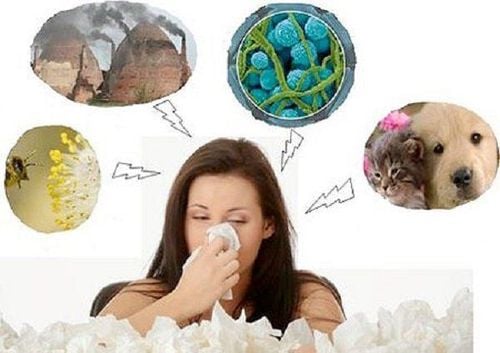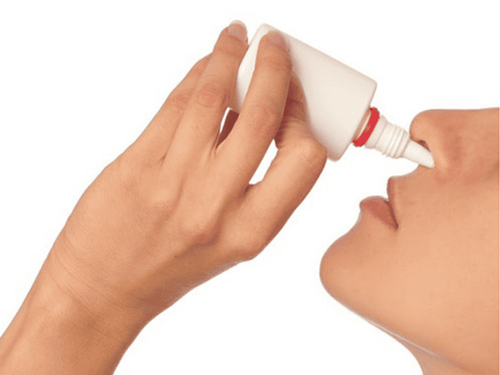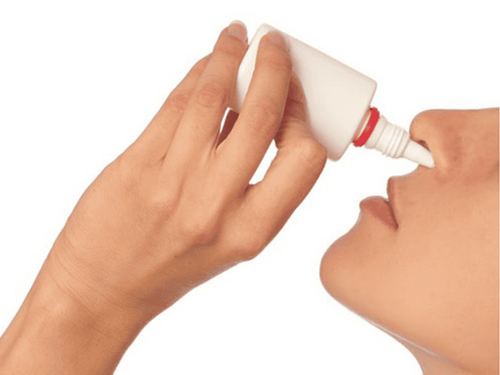This is an automatically translated article.
The article is professionally consulted by Master, Doctor Nguyen Huy Nhat - Department of Medical Examination & Internal Medicine - Vinmec International General Hospital Da Nang.Allergic rhinitis is a fairly common disease in the world as well as in Vietnam. Nowadays, the climate is increasingly harsh, the environmental pollution is increasing, so the incidence of allergies also increases.
1. What is allergic rhinitis?
Allergic rhinitis is a systemic disease, but manifests itself in the nose, because the nasal mucosa is too sensitive to the causative agent (allergen). Hypersensitivity in the nasal mucosa and manifestations of allergic symptoms of the nasal sinuses.Allergic rhinitis is a fairly common disease in the world as well as in Vietnam. According to epidemiological reports, the incidence of respiratory allergic diseases accounts for 10-15% of the world population.
2. Causes of Allergic Rhinitis

Due to exposure to allergens:
House dust, streets, libraries: Allergens enter through the respiratory tract such as inhaling house dust (in house dust there are tiny house bugs that are the culprits that cause allergies). application). Allergens such as: Cuticles, skin scales, animal hair: cat hair (proteins in cat saliva cause allergies). Allergens are pollen, feathers, molds, drugs, insects. Allergens are food: Allergens enter through the digestive tract such as eating shrimp, crab, milk, and eggs. Allergens are drugs: Aspirin and some other drugs can cause allergies. Allergens are chemicals, cigarette smoke, ozone, nitric acid, sulfur dioxide, diesel oil... or contact with paints, chemicals, cosmetics. Allergens are bacteria. Environmental factors, climate: Sudden weather changes, polluted environment irritate the nasal mucosa and create conditions for allergic rhinitis to appear.
Deformed anatomical factors such as crooked, nasal septum spines become spurs that cause disease to arise.
3. Clinical symptoms
Allergic rhinitis often occurs in episodes, during an attack the symptoms are typical, in addition to the attack may be completely normal, the allergic attack comes on suddenly and goes away very quickly.Begins with signs of itching in the nose, itching on both sides, itching that can spread deep into the sinuses, itching up the eyes, itching down the throat, itching of the skin of the outer ear canal. Sneezing continuously and uncontrollably. In young children sometimes there are no symptoms of sneezing, but only stuffy, blocked nose. Watery eyes, runny nose like water, maybe a little mucus, a lot, wet the whole towel, do not stain the handkerchief. In some cases, there are also digestive diseases such as bloating, bloating, and possibly diarrhea. Most patients with allergic rhinitis do not have a bad course, usually only stopping around the symptoms that were present when the disease was present. Rarely, episodes of infection cause acute rhinitis, sinus, ear, or throat infection. May also progress to nasal polyps, sinus later.
4. Diagnostic tests

In addition, to diagnose allergic rhinitis and the cause of allergies, it is necessary to do many other tests such as: skin tests (skin prick test, skin incision), use of direct allergens Next, indirect or direct methods for the quantification of allergic antibodies...
4.1.Skin tests This is one of the primary and primary factors in the evaluation of an allergist. Skin testing is a method of testing to clinically determine the body's sensitivity to an allergen, by introducing one or more allergens into the skin, and then evaluating the size and characteristics of the papule. local edema and inflammatory response.
These tests are performed only outside the acute phase of the disease and the patient has not previously received anti-inflammatory drugs. The purpose of this test is to detect allergy antibodies to house dust, mold, pollen, drugs, chemicals, feathers, pet dander, serum.
Skin tests are performed only during remission and are of two methods: Direct and Passive Desensitization. The direct method is the method of introducing the allergen into the body through the skin, while the passive desensitization method is injecting the patient's serum into the skin of another person, then injecting the studied allergen right where the serum was injected.
Allergens with positive skin test results can be considered causative when combined with a history of allergy with consistent results. If this is not the case and the skin test results are in doubt, then a stimulation test should be performed.
Skin tests not only provide results on the degree of sensitization but also detect individual susceptibility and are the basis for allergen dose decisions for specific desensitization treatment.
4.2.Nose smear Nasal smear is also valuable in the diagnosis of allergic rhinitis when Eosinophil is present in mucosal secretions.
4.3.Stimulation Test Is the ability to biological diagnose allergic reactions, the basis of which is to reproduce this reaction by introducing the suspected allergen into the body in order to reproduce the clinical picture as if it were real. positive reaction occurs.
There are many different types of stimulation tests such as: Nose drops test, Hot test, Cold test ... The nasal drop test is applied to detect allergens that cause allergic rhinitis. This method is not dangerous for the patient. Place one drop of the allergen in one nostril. Positive reaction when itchy nose sneezing, stuffy nose, runny nose.
So as soon as the above symptoms appear, the patient should go to the hospital to be examined by a specialist and make an accurate diagnosis. Timely diagnosis and treatment will help avoid the effects of the disease, focus on working and studying...
Doctor Nguyen Huy Nhat has many years of experience in the field of Cough treatment. at Hue Central Hospital, Hoan My General Hospital, .. before being a Doctor of General Internal Medicine at Vinmec Danang International General Hospital.
If you notice any unusual health problems, you should visit and consult with a specialist.
Please dial HOTLINE for more information or register for an appointment HERE. Download MyVinmec app to make appointments faster and to manage your bookings easily.














